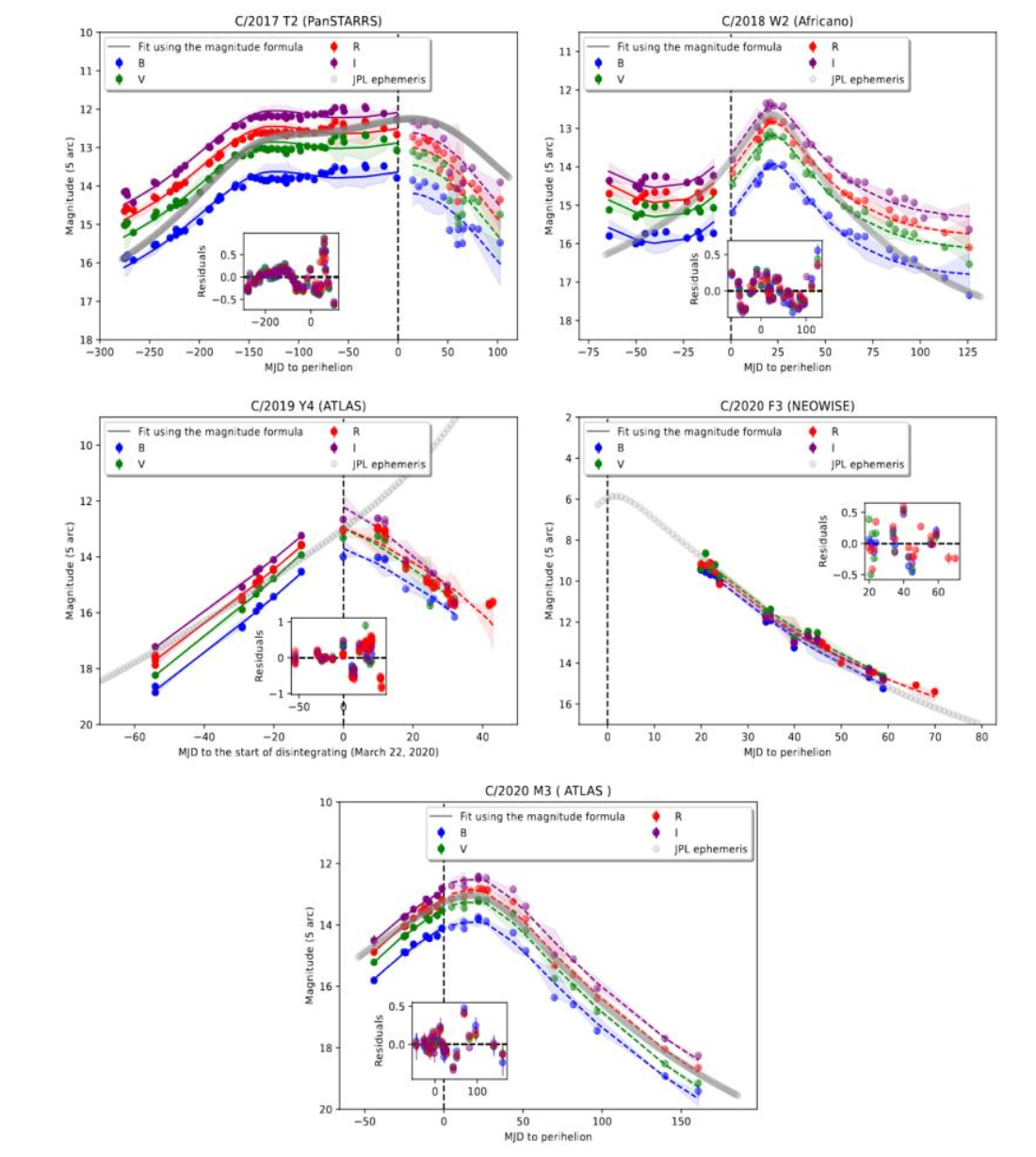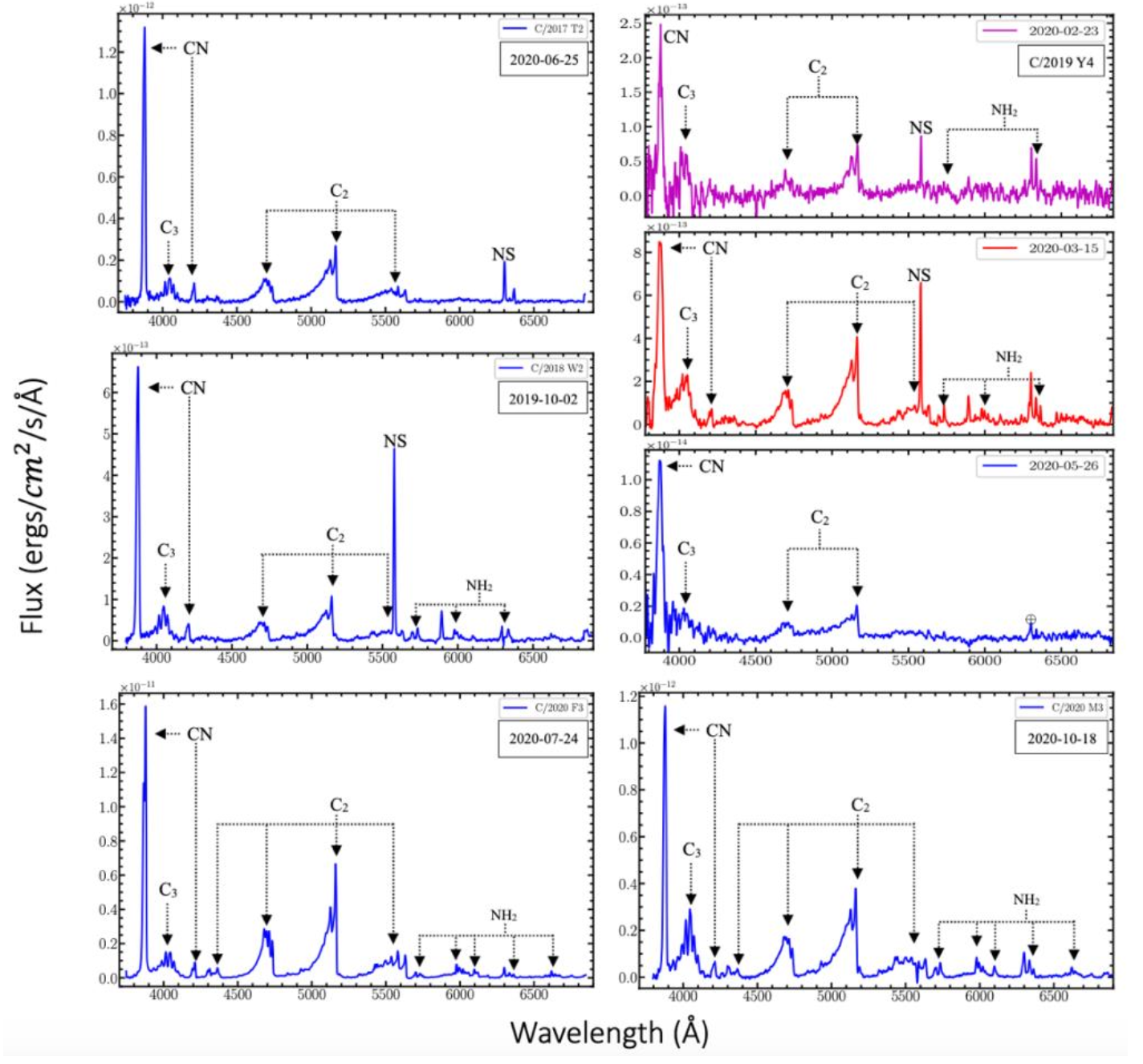- 1Space sciences, Technologies and Astrophysics Research (STAR) Institute, University of Liège, Belgium. (shmiddouch@uliege.be)
- 2Oukaimeden Observatory, High Energy Physics and Astrophysics Laboratory, Cadi Ayyad University, Marrakech, Morocco. (said.hmiddouch@ced.uca.ma))
- 3Institute of Applied Physics, Mohammed VI Polytechnic University, Benguerir 43150, Morocco.
- 4Physical Research Laboratory, Ahmedabad – 380009, India.
Introduction:
Roughly a hundred comets approach perihelion annually, yet only a fraction undergo thorough study due to the scarcity of observation time on larger and fewer available telescopes. However, comets are known to exhibit unpredictable variations for diverse reasons. Consequently, observing them on a restricted number of nights may yield a biased understanding of their evolution and composition. Acquiring homogeneous physical data from a broad sample is crucial for comprehending the distribution of their physical and chemical properties.
In this work, we present results from long-term photometric monitoring and some epochs from spectroscopic observations of four long-period comets (LPCs) and four dynamically new comets (DNCs) obtained between 2013 and 2024. These comets include C/2017 T2 (PanSTARRS), disintegrated comet C/2019 Y4 (ATLAS), the very bright comet C/2020 F3 (NEOWISE), C/2020 M3 (Atlas), C/2012 K1 (PANSTARRS), C/2018 W2 (Africano), C/2020 V2 (ZTF), and C/2021 S3 (PANSTARRS).
Our work contributes to the understanding of the cometary behavior of these two dynamical classes originating from the Oort Cloud which could be used for predictions of future comet observations or help to identify potential targets for future ESA Comet Interceptor mission [1].
Photometry (TRAPPIST):
We used both TRAPPIST-North (TN) and –South (TS) [2], to observe and follow those LPCs and DNCs along their orbits. These telescopes are equipped with standard Johnson-Cousin B, V, Rc, and Ic filters, as well as narrow-band filters CN, C3, C2, NH, and OH to compute the production rates (Qs) from the gas species and BC, GC, and BC to compute the dust proxy (Afρ) for the dust continuum [3].
Spectroscopy (HFOSC/HCT and LISA/MIRO):
Low-resolution long-slit spectra were acquired with the Himalaya Faint Object Spectrograph and Camera (HFOSC) [4], installed on the 2m Himalayan Chandra Telescope (HCT), and the 1.2 m telescope of the Mount Abu Infrared Observatory (MIRO), with the assistance of the Long slit Intermediate resolution Spectrograph for Astronomy (LISA) [5].

Figure 1: BVRI magnitude within radius aperture of 5" as a function of days to perihelion for comets C/2017 T2, C/2018 W2, C/2020 F3, C/2020 M3, and as a function of days to the disintegration for comet C/2019 Y4.
*The magnitude formula: m = M0 + 5 log(rg) + 2.5 n log(rh).
Table 1: TRAPPIST observational circumstances and dynamical types of the comets reported in this work. All the orbital elements are taken from the NASA JPL/Horizon database.


Figure 2: The Optical spectrum of comets C/2017 T2, C/2018 W2, C/2019 Y4, C/2020 F3, and C/202 M3. For the disintegrated comet C/2019 Y4 (ATLAS), Top: Optical spectrum of 19Y4 before disintegration on 2020-02-23; middle: during disintegration on 2020-03-15, and bottom: after disintegration on 2020-05-26.
Acknowledgments
TRAPPIST is a project funded by the Belgian “Fonds National de la Recherche Scientifique” (F.R.S.-FNRS) under grant T.0120.21. This work is supported by the BIPASS program from the International Division of the Department of Science and Technology (DST; Govt. of India) and the Belgian Federal Science Policy Office (BELSPO; Govt. of Belgium). acknowledges support for the grant from the Academy of Research and Higher Education (ARES).
References:
[1] Jones, Geraint H et al. 2024, The Comet Interceptor Mission.
[2] E. Jehin et al. 2011, The Messenger, 145, 2-6.
[3] Farnham, T., Schleicher, D., & A’Hearn, M. (2000), Icarus, 147, 180.
[4] Aravind, K et al. 2021. Mon. Not. R. Astron. Soc. 502 (3), 3491–3499.
[5] Venkataramani, K., 2019. Optical Spectroscopic Studies of Minor Bodies of the Solar System (PhD Thesis).
How to cite: Hmiddouch, S., Jehin, E., Jabiri, A., Moulane, Y., Krishnakumar, A., Vander Donckt, M., Ahuja, G., Benkhaldoun, Z., and Ganesh, S.: Long-term TRAPPIST monitoring of a few Long Period and Dynamically New Comets., Europlanet Science Congress 2024, Berlin, Germany, 8–13 Sep 2024, EPSC2024-1139, https://doi.org/10.5194/epsc2024-1139, 2024.